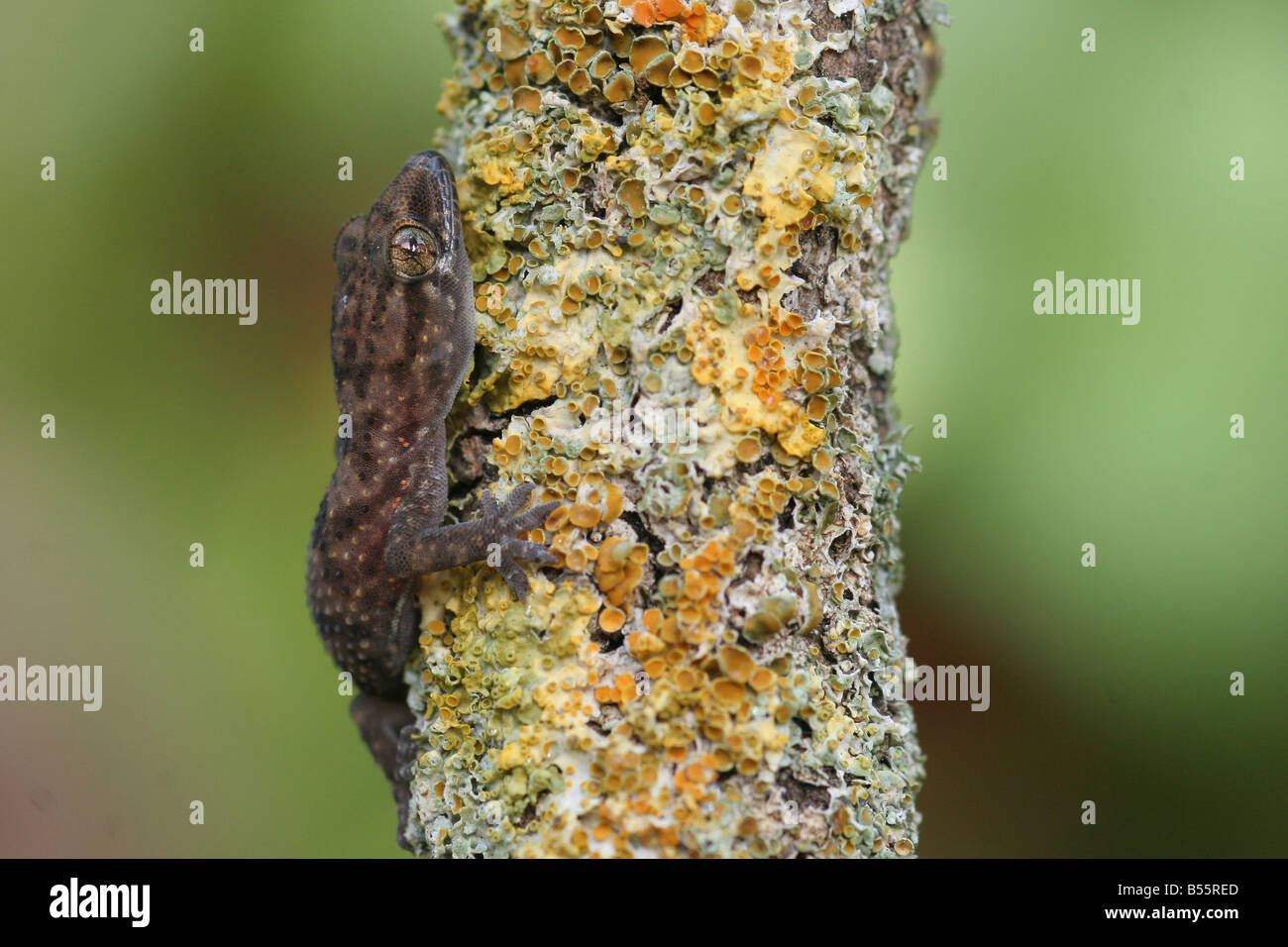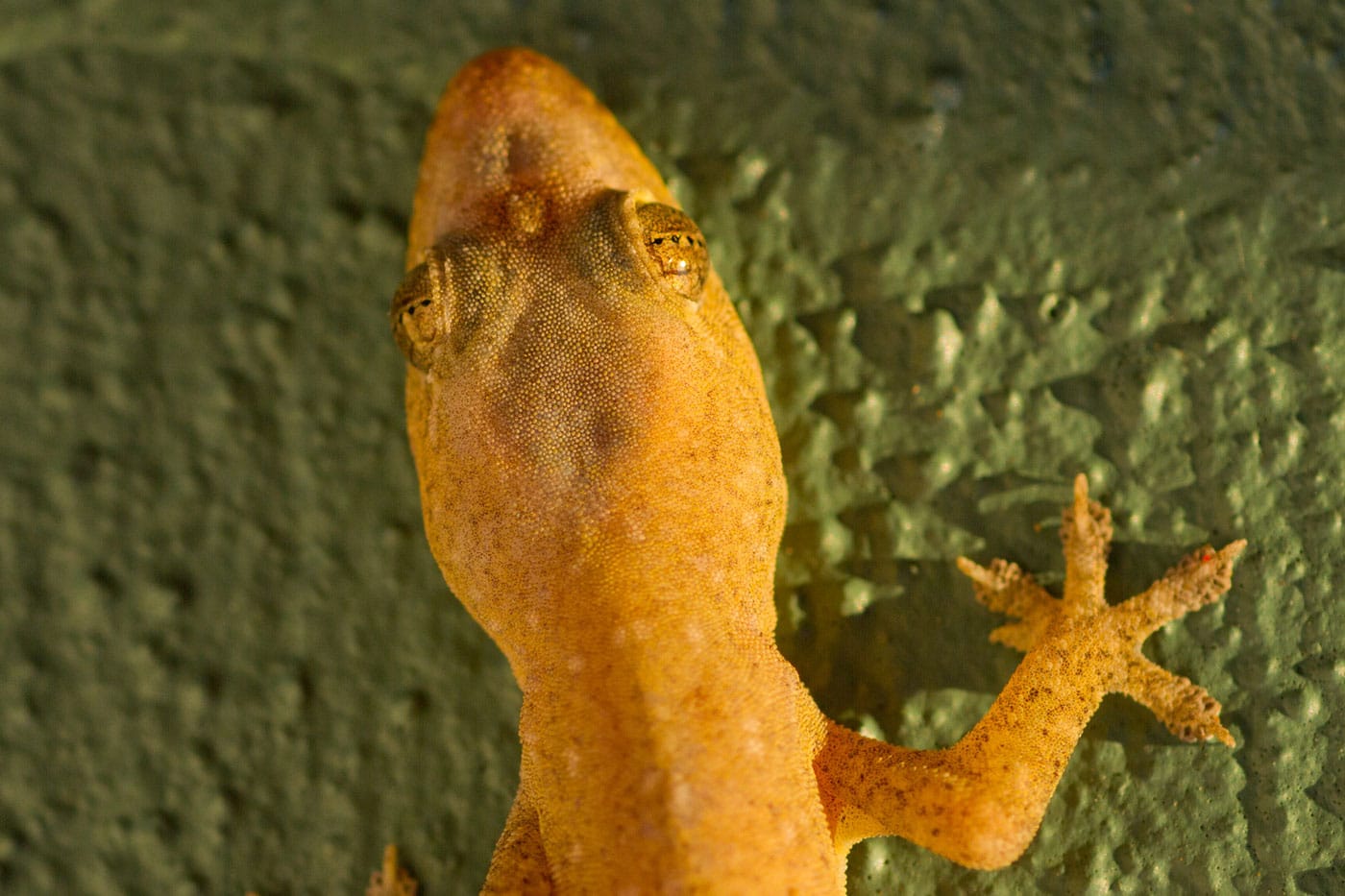Table Of Content

Make sure to remove any uneaten insects from the enclosure after each feeding to avoid excess waste, as this can lead to unsanitary conditions and potential health issues for your gecko. Mediterranean house geckos don’t mind handling, but you have to earn their trust first. Gut impaction is a common issue among geckos who live on a substrate that’s too easy to consume. Your gecko is bound to eat some soil as they hunt down their food. Also, never offer insects that are bigger than the size of the gecko’s head. The goal here is to create many climbing surfaces for your Mediterranean house gecko.
Typical Feeding Habits
Mediterranean House geckos can be easily identified by their colors; they are either grey or brown and have pink or purple undertones with dark mottling. Their skin is usually bumpy, their underbelly is translucent, and with correct lighting, you can see their beating heart or an egg inside. Mediterranean House geckos, also known as Turkish geckos, are one of the most popular pet gecko species, as they are great for beginners and can be handled easily if they are not too young. However, they can still get scared and try to bite the handler and escape. Decorate the enclosure with branches and climbing structures to promote exercise and offer hiding spots.
Temperature and Lighting Requirements
On the cooler side, temperatures should range from 75-80°F (24-27°C). It is important to monitor the temperatures regularly using a thermometer to ensure they remain within the appropriate range. To breed female geckos, you should provide calcium supplements to provide for the calcium that is being expended in developing eggs. Set up a basking spot to create a heat gradient and provide a warm environment for sleeping geckos. Setting up a designated basking spot will help to create a heat gradient and provides a warm spot for a sleeping gecko. Geckos thermoregulate so having a hot and cool side of the tank is essential.
Mediterranean House Gecko: Care, Lifespan, Diet, and Size
Ancient Geckos Found Preserved in Prehistoric Amber - New Historian
Ancient Geckos Found Preserved in Prehistoric Amber.
Posted: Wed, 09 Mar 2016 08:00:00 GMT [source]
Male Mediterranean House Geckos initiate the mating process by displaying various courtship behaviors to attract females. These behaviors include head bobbing, tail wagging, and vocalizations. The male gecko will often approach the female and attempt to grasp her with his mouth. This behavior, known as “nipping,” is a way for the male to assert dominance and initiate mating.
They are small with gray, brown, or pinkish skin covered with dark spots or mottle. It is possible to keep more than one gecko in the same environment. However, you have to plan the group accordingly since males do spar. Most are relaxed, exploring the habitat you create and clinging onto the glass walls of the enclosure. To prevent them from occurring, stay on top of tank conditions. Keep a hygrometer and thermometer in the tank so that you can ensure conditions are in the proper range.
Place heating elements only in one half the tank – this will help to create a heat gradient. Respiratory infections can sometimes occur because of incorrect temperature or humidity in their enclosure. This is characterized by lethargy, loss of appetite, or open-mouth breathing.
Mediterranean House Gecko Habitat
Common house geckos are from a humid subtropical climate, therefore, do your best to mimic this in their enclosures. Try to maintain a daytime temperature gradient of 75 to 90 F with a nighttime low of 65 to 75 F. Heat can be provided by utilizing ceramic heating elements or reptile bulbs in a reflector fixture. A heat mat may also be useful for supplemental heat, but it will not be very useful in heating the ambient air since it is located under the terrarium. Mediterranean house geckos are smaller species of geckos, often called microgeckos. Their bodies are round and cylindrical in shape, with large lidless eyes, bumpy skin, a tapered tail, and sticky toe pads.
It’s a good idea to invest in a hygrometer that you can monitor around the clock. If you don’t have a ton of room for pets, these reptiles can be an excellent choice. The species will cling to vertical or even inverted surfaces when at rest. In a terrarium they will mostly be at rest on the sides or on the top cover rather than placing themselves on plants, decorations or on the substrate, thus being rather conspicuous. These three non-native Geckos have all been introduced in Florida and California.
Stay Updated with the Latest on Geckos
You’re likely to find Western Banded Geckos around rocks or debris, which they use for cover when they are above ground. May be confused with the Indo-Pacific Gecko, Hemidactylus garnotii, although the Mediterranean gecko has bumpy skin while the Indo-Pacific gecko has smooth skin. Although they have adhesive toes that help them cling to walls and rocks whilst maintaining even an upside down position, the adhesive pads don't extend to the end of the toes.
Yes, but it’s not required for their wellbeing, and requires a proportionately larger enclosure to reduce the risk of fighting and injury. The more room you can provide, the less conflict there is likely to be. Remember, building a bond with your Mediterranean House Gecko takes time and patience.
Though, like most geckos, Turkish geckos also have small teeth, and their bite won’t hurt much, you should never over-handle your gecko. These geckos originated from tropical and subtropical areas of the Mediterranean and were found in the United States in 1915 in Florida. The Mediterranean House Gecko is very adaptable, docile and hardy – they are great for first-time owners. Treat hatchlings much like you would an adult and make sure they are getting nutrients from gut loaded insects. They are commonly found in their hides during the day and are most active in the evening.

GeckoWatch is a community science project to map the fine-scale distribution of nonnative geckos in the United States. The primary interest is in mapping the rapidly increasing range of the Mediterranean House Gecko, Hemidactylus turcius. One significant threat to the Mediterranean House Gecko is loss.
Its success in colonizing new territories can be attributed to its nocturnal nature, which reduces its exposure to potential predators and increases its chances of survival. Explore the , , , and of the full grown Mediterranean house gecko. Discover its nocturnal activity, insectivorous diet, and its potential impact on human dwellings. Mediterranean house geckos are a species of "Least Concern" on the IUCN Red List. Maintaining suitable temperature and lighting requirements is also essential for their longevity.
Low predation causes house geckos to maintain a low mortality rate. Male and female house geckos release loud and noisy squeaks when attacked and melodically inflected squeaks when threatened. Female Mediterranean house geckos have a breeding season from April to August of every year. Females can take up to two months to lay their clutches of eggs. As the internal egg membrane disappears, the shell becomes moist and translucent.

No comments:
Post a Comment